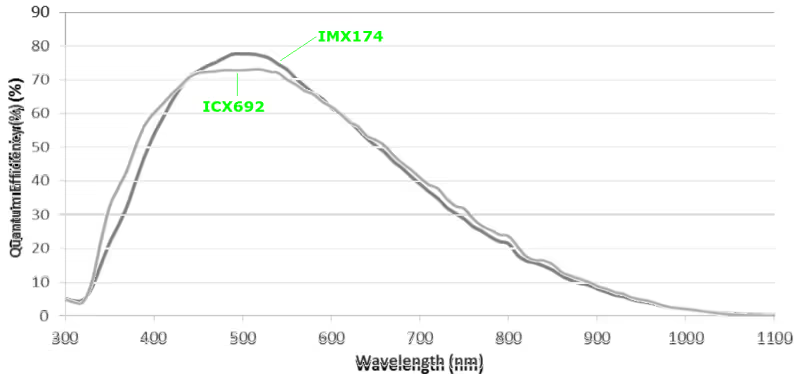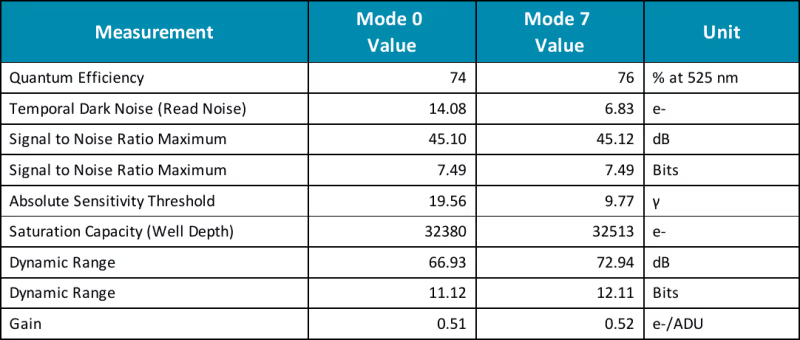Taking a quick look at Sony IMX174 CMOS sensor
Point Grey as one of first announced a new Grasshopper3 camera equipped with a new sensor - Sony IMX174. The announcement was quite hot among planetary photographers. The USB3 camera with this chip can do 162 FPS at 1920 x 1200 frame. The pixels are 5.86 µm while the diagonal is 1/1.2". There are no cameras to test yet, but we can look at some specs and dark frames.
The Grasshopper3 GS3-U3-23S6M-C camera is priced at 945 EUR. That’s almost 4 times more than for a ASI120MM, or QHY5-IIL. It's also noticeably cheaper than CMV4000 cameras (also big and fast). Is such high price worth it? Lets check the sensor specifications:


The new CMOS sensor is quite sensitive, just like other modern CCDs and CMOS sensors. I've added ICX692 for comparison (1288 x 728 at 30 FPS in much cheaper Blackfly line). The chart and table are from Point Grey document about camera performance. The table is quite interesting to look at. The read noise is 14e or 7e. The first value is bit high, but look at the dynamic range. 11-12 bits of dynamic range puts this camera in the top of all listed cameras in that document. If the dynamic range is so high then the level of noise compared to the signal from the imaging objects is very very small. Although other cameras can have like 9-10 bits, but still CMOS sensors never had easy when it comes to low noise and high image quality.
Lets take a loot at IMX174 itself. It's a new IMX CMOS sensor, and first with a global (and not rolling) shutter. This shutter prevents any image distortions/artifacts made by (fast) moving objects in camera field of view. In Solar System astrophotography that may refer to bad seeing rocking and blurring the imaged planet or surface. Also image-sensors-world.blogspot.com wrote about it (first and second time). You can find some imaging sensor engineers there that can comment on it a bit.
Dark frames
There are no cameras on the market to play with yet, but I got few very quick (single frame) dark frames from a test setup using that sensor. I've published them on flickr.com. For comparison I've added EV76C661 which is very noisy when you turn up the gain and exposure up. Even 3 sec uncooled exposures didn't revealed much noise from the sensor, just some hot pixel alike noise. On the stretched 3sec dark frame some slight horizontal lines are visible. I don't have a direct comparison but they are rather less intense than in some older Micron CMOS sensors.
Summary
Sony IMX174 seems quite interesting to Solar System photographers. Big and fast is good for the Moon or Sun. It should be also very good for planetary imaging on smaller frames - if it will have higher gain values available (now it doesn't so it may be quite poor at it!). The price isn't low and when ASI120MM/QHY5-IIL are so popular and cheap probably not everybody will want to switch, at least not without real camera tests with some telescopes. Existing IMX sensors were tried a bit in astrophotography, but none of them did more popular. This one has some new features and improvements and maybe we will see this one rise above? Time will tell, although I wouldn't say it will be a big change compared to existing cameras.
Comment article